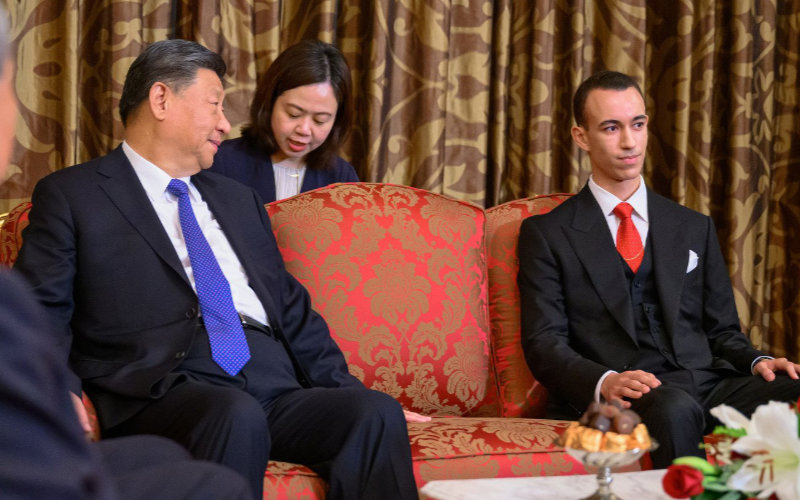Dual Anchors Reshape Morocco’s Growth?
Morocco’s China pivot targets a 20% manufacturing share by 2027, stable reserves above five months, and orderly MAD=X as CNY=X settlements grow; frontier risk premia ease if FM and AFK sustain inflows and local 10-year yields hold in the mid-4% range.

Morocco’s decision to deepen economic ties with China is a deliberate move to rebalance growth drivers toward tradeable manufacturing, diversified funding, and multi-currency payments while preserving macro stability. Real GDP growth is tracking near 3.2% in 2024 with a projected 3.5–3.9% in 2025, headline inflation has retreated toward 1–2%, and the policy rate remains restrictive at 3.0% to anchor expectations.
External buffers are adequate at roughly five to six months of import cover, general government debt is just under 70% of GDP, and the current account hovers around a 1–2% of GDP deficit. Bilateral trade with China is already sizable—around $8–9 billion in 2024—and skewed toward machinery and electronics imports. The partnership’s economic signal is pragmatic diversification: tilt capex and technology inflows eastward without eroding EU market access.
Transmission runs through ports, plants, and payments. Tangier Med, a top-tier global hub handling over 9 million TEUs in 2024, compresses transit times into the EU and West Africa and lowers logistics costs for Chinese-linked supply chains. That infrastructure anchors co-location in autos, electronics, and renewables across the Tangier–Kenitra–Casablanca corridor. If Chinese FDI lifts capital intensity and local content, manufacturing value-added—about 15% of GDP today—can push toward 20% by 2027, lifting export unit values and employment density.
The payments leg matters for FX microstructure: incremental CNY settlement can reduce USD demand at the margin only if liquidity is reliable; otherwise, CNY funding gaps migrate into USD/MAD basis and reintroduce swap risk. Pre-funded swap lines and predictable clearing will decide whether CNY=X hedges or compounds currency exposure to MAD=X.
Macro effects are measurable and time-consistent. Import-heavy investment will widen the goods balance before new capacity exports; a 1–2 percentage-point capex impulse can keep the current account near a 2% deficit through 2026 if not backed by net FDI and stable portfolio flows. Debt dynamics remain controllable if the primary deficit narrows and nominal GDP growth exceeds effective interest costs. With local 10-year yields around the mid-4% area and real rates mildly positive, the fiscal anchor holds provided project returns exceed funding costs and are concentrated in tradables. The risk is crowding-out if concessional flows fade and commercial borrowing rises faster than productivity, compressing fiscal space as the interest bill climbs.
Sector mechanics clarify the upside. Autos can move up the value chain from wire harnesses to EV components, raising value-added per worker and deepening supplier networks. Renewables can expand tradable capacity via solar manufacturing and green hydrogen inputs, substituting energy imports and creating FX-neutral capex cycles. Phosphate-linked industries can smooth terms-of-trade variance by shifting toward specialty derivatives with higher price realization per ton. All three require predictable power, water, logistics, and skills. Bottlenecks there cap utilization and dilute the FDI multiplier; addressing them is a macro precondition, not a micro afterthought.
Markets are beginning to price a modest re-rating without stretching valuations. MAD=X remains orderly inside the managed band as tourism and remittances support the balance of payments, while a durable liquidity backstop would allow gradual CNY=X settlement growth without destabilizing the dirham. Cross-asset risk appetite is constructive across frontier proxies such as the iShares MSCI Frontier and Select EM ETF (FM) and Africa-focused AFK, where tighter spreads typically coincide with improved reform credibility. If eurozone demand softens, EURUSD=X sensitivity will transmit through goods exports; diversified market destinations and more complex export baskets reduce that beta.
Execution risks are defined and hedge-able. Supply-chain dependence can widen the non-oil goods deficit if local content lags; enforce domestic procurement thresholds and vendor development to retain value. Fiscal slippage can emerge if state-backed projects migrate to market funding before productivity ramps; impose project-by-project IRR hurdles and disclose quasi-fiscal exposures. External shocks—from Red Sea rerouting to commodity swings, including CL=F volatility—can raise import costs; diversify shipping alliances and build countercyclical services exports to cushion the terms-of-trade hit.
The forward test is numeric and dated. By end-2027, success equals manufacturing value-added at or above 20% of GDP, the trade deficit narrowing toward 2% of GDP, annual FDI near 3–3.5% of GDP, reserve cover sustained above five months, and a measurable share of external trade settled in CNY that does not widen USD/MAD basis spreads.
If those indicators move in tandem, Morocco secures a structural upgrade to a dual-anchor model—EU market access with Asian capital and technology—supported by low inflation, credible FX management, and disciplined public investment. If they stall, the pivot risks becoming a higher-debt import channel rather than a competitiveness engine.





